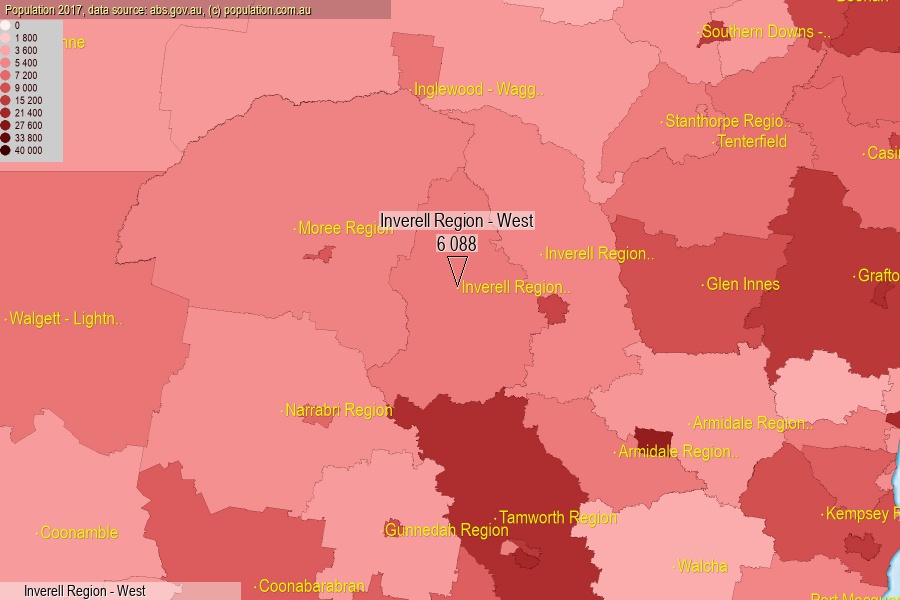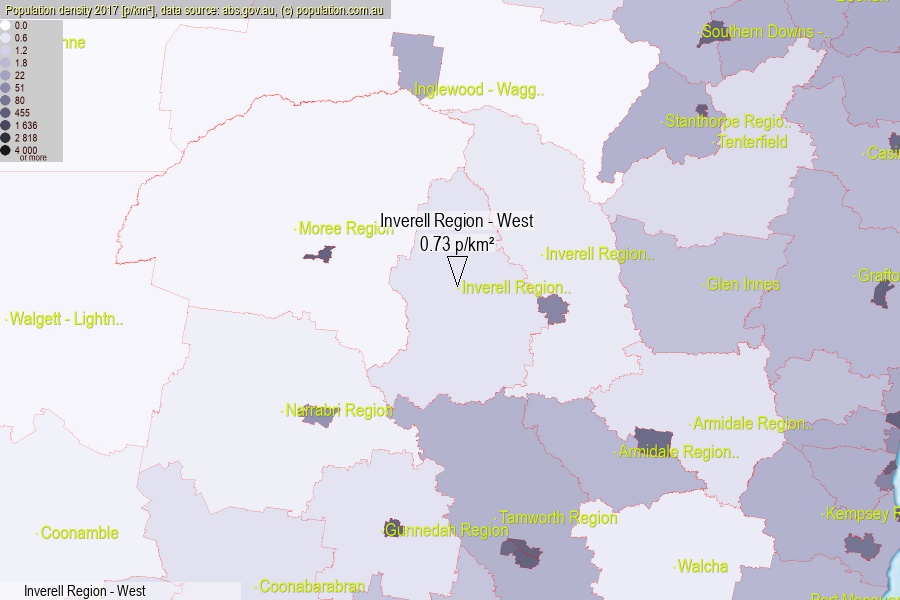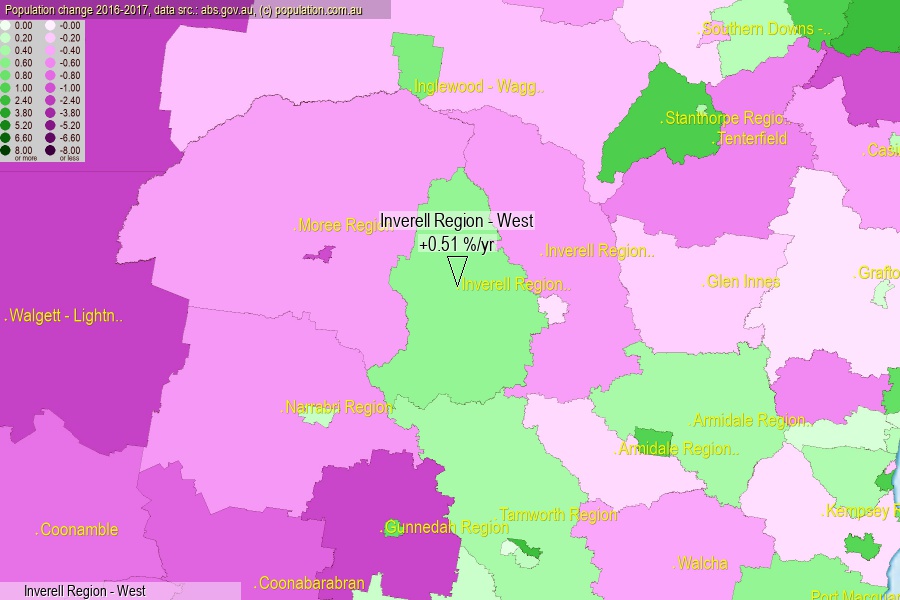 population.com.au
population.com.auLast official estimated population of Inverell Region - West (as Statistical Area Level 2) was 6 088 people (on 2017-06-30)[2]. This was 0.02% of total Australian population and 0.077% of NSW population. Area of Inverell Region - West is 8 283.60 km², in this year population density was 0.73 p/km² . If population growth rate would be same as in period 2016-2017 (+0.51%/yr), Inverell Region - West population in 2025 would be 6 342. [0]



Click to enlarge. Inverell Region - West is located in the center of the images.
Population [people], population density [p./km²] and population change [%/year] [2]
View borders » (new window) [4]
[1991-1992] +0.31 %/Yr.
[1992-1993] -0.63 %/Yr.
[1993-1994] -2.78 %/Yr.
[1994-1995] -3.52 %/Yr.
[1995-1996] -0.42 %/Yr.
[1996-1997] -0.31 %/Yr.
[1997-1998] -0.41 %/Yr.
[1998-1999] -0.44 %/Yr.
[1999-2000] -0.30 %/Yr.
[2000-2001] -0.27 %/Yr.
[2001-2002] -0.72 %/Yr.
[2002-2003] -0.73 %/Yr.
[2003-2004] -0.80 %/Yr.
[2004-2005] -0.13 %/Yr.
[2005-2006] +0.51 %/Yr.
[2006-2007] -2.40 %/Yr.
[2007-2008] -2.24 %/Yr.
[2008-2009] +0.09 %/Yr.
[2009-2010] -0.03 %/Yr.
[2010-2011] -1.62 %/Yr.
[2011-2012] +1.21 %/Yr.
[2012-2013] +1.05 %/Yr.
[2013-2014] +0.70 %/Yr.
[2014-2015] +1.08 %/Yr.
[2015-2016] +0.98 %/Yr.
[2016-2017] +0.51 %/Yr.
[0] Calculated with linear interpolation from officially estimated population
[1] Read more about SA2 and Australian Statistical Geography Standard (ASGS) on abs.gov.au
[2] Population data from Australian Bureau of Statistics (Population and density: 2017; change: 2016-2017)
[3] Digital Boundaries: Australian Statistical Geography Standard (ASGS) 2016.
[4] Border coordinates are simplifyed using Ramer-Douglas-Peucker algorithm.